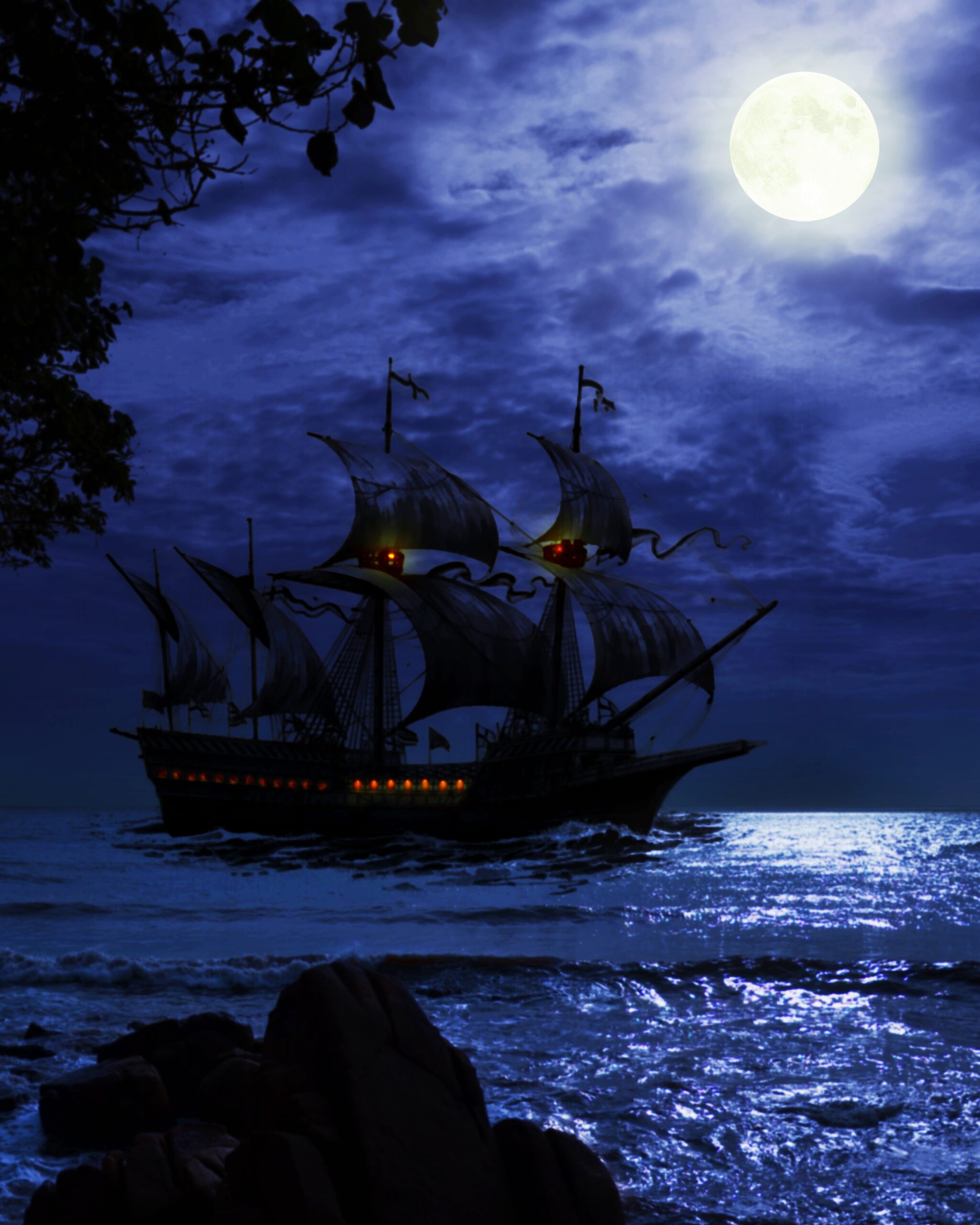Following the explorations of Columbus, the Spanish claimed all of the Americas, with the exception of Portuguese Brazil, but they only occupied the territories around the equator. This was called the Spanish Main. So, during the Elizabethan era, the English began to colonize the unoccupied areas, both the lands north of Florida and the tiny islands of the eastern Caribbean. The Spanish considered these settlements to be illegal intrusions, but without the resources to drive them out they basically ignored them. They were, however, very protective of the areas around the Spanish Main. When an English company attempted to settle the Providence Island colony off the coast of Central America, Spanish forces attacked it three times before finally eliminating it.
Jamaica
In an attempt to increase England’s presence in the Caribbean, Oliver Cromwell sent a naval force to invade the Spanish islands of Hispaniola and Jamaica, which brought about a wider war with Spain. This was the first war started in the Americas that shifted to Europe. Although the European theatre ended in the late 1650s, fighting continued in the Caribbean until the 1670 Treaty of Madrid. In that agreement, Spain officially ceded Jamaica to England and also recognized all of England’s American holdings.
A valuable and strategic possession, Jamaica contributed to the massive increase in sugar consumption that would irrevocably transform the European diet, and dramatically increased British involvement in the slave trade. Jamaica soon became Britain’s premier slave colony. Port Royal also became the hub for English piracy.
Henry Morgan
Henry Morgan came to Jamaica as a member of Cromwell’s invading army and by 1665 he had risen to the rank of a ship’s captain. Through his campaigns against the Spanish he gained considerable wealth, which enabled him to purchase land on the island. His upward mobility continued when he married Mary, the daughter of Jamaica’s Lieutenant Governor (who was also Morgan’s uncle).
In 1667, Governor Modyford elevated Morgan to the rank of admiral and installed him as commander to organize the English privateers.
One of the subsequent campaigns Morgan led was the invasion of the Panamanian city of Portobello, which occurred after the peace treaty had been signed between the British and the Spanish. After Morgan’s invasion of the city, which included the torture of Spanish colonists in order to gain information regarding the location of treasures that might be plundered, he erroneously asserted that he had gained information that the Spanish were planning to attack Jamaica. When the Spanish made a formal complaint and accused him of piracy, Morgan defended his standing as a privateer, arguing that due to the irregularities of transatlantic communication he had never been informed of the existence of a treaty. However, in 1670, Morgan and Modyford were detained in England for continually disobeying orders issued, disobedience that required punishment in order to placate Spain.
After the restoration, Morgan’s actions came to the attention of King Charles II, who knighted him in 1673 for his deeds on behalf of the Empire and offered him the Lieutenant Governorship of Jamaica.
Privateers and Pirates
This change in status for Morgan had much to do with the changing interests of England following the restoration of the Stuart line. England had moved from an agenda of mollifying Spain to one of asserting a continued willingness to engage privateers in defense of the British colonies. Morgan’s Knighthood was a strong signal to Spain that the political tides were turning. Since England needed to keep the Royal Navy close to Europe, it was up to Morgan and his privateers to both defend and expand English colonization in the New World. According to the Spanish, however, they were all pirates.
Henry Morgan, pirate, privateer, knight, and Lieutenant Governor of Jamaica had become the archetype, representing the desire for wealth and social mobility that drove many men into piracy during the time of the Stuart kings and queens. Quickly, Jamaica became known as the place where those from humble beginnings were able to satisfy self-interest through the perception of public service to achieve social advancement.

 While you are free to make your own choices, it is obvious that the choices you make will be influenced by the society and culture you are in, and that is fine. The key is to live the life that you want, and many of the things that influenced you prior to this point are important to you so of course you’re going to keep them. The important first step is to describe what the ideal life means to you before you can determine how you are going to get there. This isn’t going to be physical things such as possessions, but about how you want to feel. Knowing that, you are able to examine the various ways you can achieve those feelings. This is your goal. It is then your responsibility to set a plan in motion to get there, to do what it takes, to achieve it.
While you are free to make your own choices, it is obvious that the choices you make will be influenced by the society and culture you are in, and that is fine. The key is to live the life that you want, and many of the things that influenced you prior to this point are important to you so of course you’re going to keep them. The important first step is to describe what the ideal life means to you before you can determine how you are going to get there. This isn’t going to be physical things such as possessions, but about how you want to feel. Knowing that, you are able to examine the various ways you can achieve those feelings. This is your goal. It is then your responsibility to set a plan in motion to get there, to do what it takes, to achieve it.